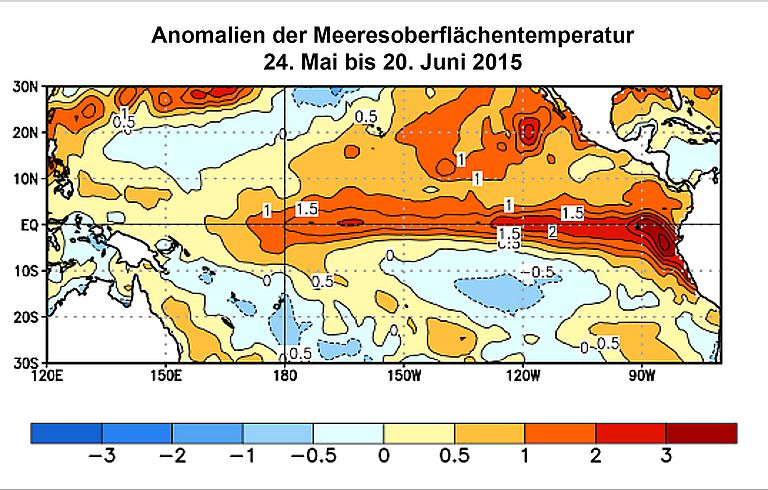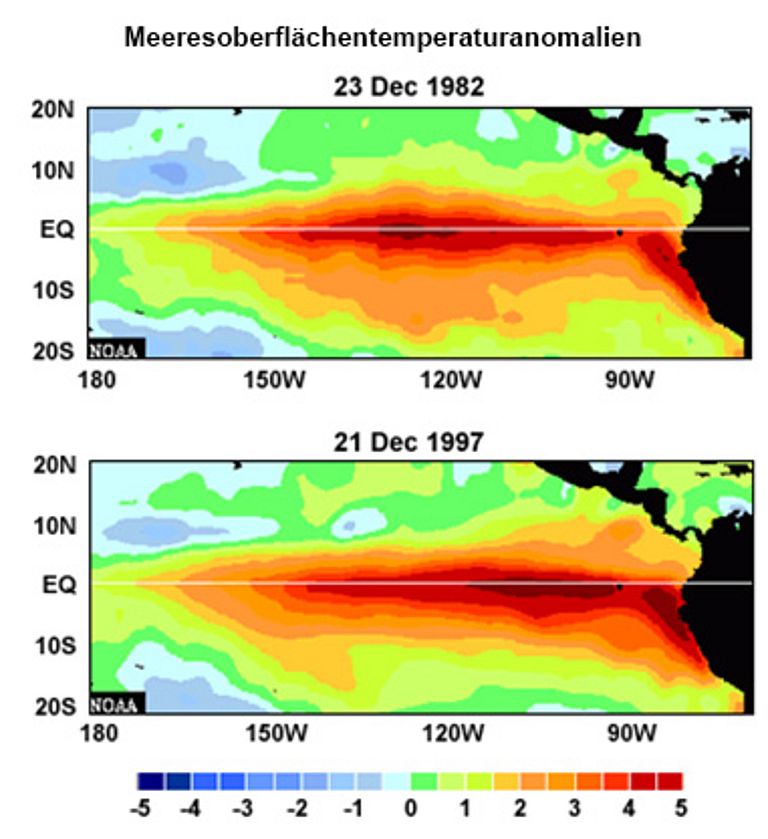Does climate change lead to Super El Niños?
Kiel researchers present study on Pacific climate phenomenon
About every two to seven years, a warming occurs in the tropical eastern and central Pacific. The phenomenon has, among others, adverse effects on the fishing off Peru and Chile. Since it peaks primarily around Christmas time, the Peruvian fishermen referred to the exceptional warming as El Niño, Spanish for the Christ Child. Today we know that it has an impact on the climate throughout the Indo-Pacific area, and particularly strong events even have global impacts. For example, catastrophic floods in directly neighboring countries, as well as extreme droughts in the Amazon basin and even in Australia may be caused by the Pacific Christ Child. But is El Niño also influenced by global warming? This question was pursued by scientists at GEOMAR Helmholtz Centre for Ocean Research Kiel supported by the Collaborative Research Centre ("Sonderforschungsbereich") 754. "The results show that global warming may intensify particularly strong El Niño events even further", says Professor Dr. Mojib Latif of GEOMAR, lead author of the study. The results were now published in the international journal Climatic Change.
For their study, the authors have used the Kiel Climate Model (KCM), a well-recognized computer model simulating the processes in the ocean, the atmosphere and the sea ice, and their interactions with each other. This model was used for 22 different simulations over 100 years of climate warming. The initial conditions were different for each run. "We were trying to clarify to what extent the results depend on certain climate conditions we may or may not even know," says Professor Latif.
Despite the different initial conditions, the results were rather clear. "On the one hand, we were able to observe that the fluctuations in sea surface temperature were enhanced by global warming," says Professor Latif, "but most of all, the incidence of extreme El Niños also increased." The scientists referred to these events as "Super El Niños".
Such events have occurred in the past as well. One is known from the late 19th century. That event likely contributed to the Great Famine of 1876–78 in Southern India. Two more big El Niño events occurred during 1982-83 and 1997-98. At the time, the sea surface temperatures of the eastern Pacific were up to seven degrees Celsius above the average temperatures. "The simulation leads to the conclusion that such events will occur more frequently due to unabated global warming," says Professor Latif. One of the reasons, he and his colleagues believe, is the warming of the western Pacific to depths of 200 meters. Theoretical studies show that this is where the strength of El Niño events is often decided.
With some anticipation climatologists now watch the current development in the Pacific, because a strong El Niño is once again predicted for the second half of 2015. "However, we are also interested why a previously predicted strong El Niño failed to develop to full strength in 2014," says Professor Latif, "such developments help us to check our models against reality and to generate better projections in the future."
Original publication:
Latif, M., V. A. Semenov and W. Park (2015): Super El Niños in response to global warming in a climate model. Climatic Change, http://dx.doi.org/10.1007/s10584-015-1439-6
Contact:
Jan Steffen (GEOMAR, Communication & Media), Phone: +49-431 600-2811, presse(at)geomar.de




